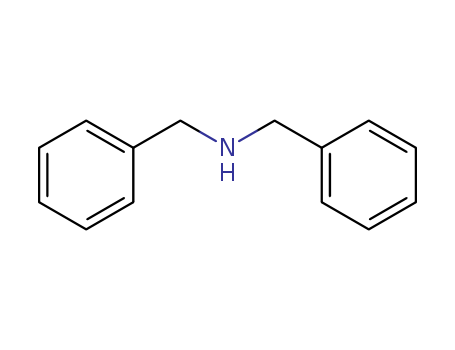10.1016/j.tetlet.2008.01.008
The research focuses on the synthesis of 2-substituted 2H-chromenes, which are important oxygenated heterocyclic compounds with potential applications as inhibitors for TGF-b receptors. The synthesis is achieved using potassium vinyltrifluoroborates and salicylaldehyde in the presence of secondary amines, specifically dibenzylamine, at 80°C in dimethylformamide (DMF). The reactants include various substituted salicylaldehydes and potassium vinylboronic acids. The products, 2-substituted 2H-chromene derivatives, are obtained with yields ranging from 51% to 90%. The analyses used to characterize the synthesized compounds include thin layer chromatography, 1H NMR, 13C NMR, and high-resolution mass spectrometry, which confirm the purity and structure of the products.
10.1021/ja508371q
This research investigates the mechanism of amine oxidative N-dealkylation via cupric hydroperoxide species, which are significant intermediates in processes such as fuel cells and (bio)chemical oxidations. The study aims to understand the reaction kinetics and products of a CuII-OOH species that performs oxidative N-dealkylation on a dibenzylamino group. The researchers synthesized and characterized a series of ligand-copper(II) bis-perchlorate complexes, and through experimental observations and DFT calculations, they proposed a new reaction mechanism. The study concludes that the chemistry proceeds by rate-limiting Cu-O homolytic cleavage of the CuII-(OOH) species, followed by site-specific copper Fenton chemistry, leading to the formation of benzaldehyde. Key chemicals used in the process include dibenzylamine, copper(II) salts, hydrogen peroxide, and various ligands with different para-substituents.
10.1002/chem.200600725
The research focuses on the development of a direct catalytic asymmetric a-aminomethylation of aldehydes, a significant advancement in organic chemistry. This reaction provides a pathway to ?-amino aldehydes, which are valuable precursors to ?2-amino acid derivatives and ?-amino alcohols, important in pharmaceuticals. The study explores the use of chiral amine and amino acid catalysts to facilitate the reaction between unmodified aldehydes and a formaldehyde-derived imine precursor. The reactions were conducted under various conditions, with the addition of lithium halide salts found to enhance enantioselectivity. The experiments involved screening different catalysts, such as proline and its derivatives, as well as chiral pyrrolidines, using dibenzylamine-derived aminomethyl ether and isovaleraldehyde as reactants. The enantioselectivity and conversion rates were determined through NMR spectroscopic analyses and chiral-phase HPLC analysis. The results showed that the reactions were fast, highly chemoselective, and yielded the corresponding ?-amino alcohols with high enantiomeric excess (up to 98% ee) after in situ reduction. The research also proposed transition-state models to account for the stereochemical outcomes of the reactions catalyzed by different chiral pyrrolidines and proline derivatives.
10.1021/jo9712714
The research focuses on the enantioselective synthesis of α-dibenzylamino alcohols, which are key precursors to synthetically important R-amino aldehydes, also known as Reetz aldehydes. These compounds are valuable due to their stability and high diastereoselectivity in reactions with organometallics. The study presents a dynamic kinetic resolution process for the preparation of these alcohols from racemic α-halo acids, using (R)pantolactone esters and primary amines, including dibenzylamine, in the presence of tetra-n-butylammonium iodide. The process yields (S,R)-R-amino esters with good to excellent de's (77-98%) and acceptable yields (60-85%). The resulting esters are then reduced with LiAlH4 to give enantiomerically enriched α-dibenzylamino alcohols without loss of stereochemical integrity. The study also explores the use of tert-butyl (4S)1-methyl-2-oxoimidazolidine-4-carboxylate as a chiral auxiliary, which was found to be superior to (R)-pantolactone in the dynamic kinetic resolution process. The research concludes that these auxiliaries can provide a variety of α-dibenzylamino alcohols and the derived Reetz aldehydes in either enantiomeric form, offering an efficient route to these compounds.



 Xn,
Xn, Xi,
Xi, C
C


